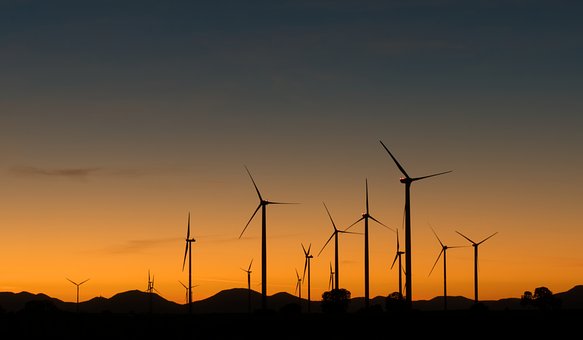Size matters when optimizing for wind-turbine production. Taller towers with longer blades typically capture greater, stronger winds for power generation. However, turbine size is only one important feature of a successful wind farm. Siting and turbine placement at a wind site is also critical. And according to researchers at UC Santa Barbara, wind turbines rarely “play well with others.”

How wind turbines are sited relative to one another other matters when it comes to maximizing a project’s energy production.
“We’ve been designing turbines for use by themselves, but we almost never use them by themselves anymore,” said UC Santa Barbara mechanical engineering professor Paolo Luzzatto-Fegiz. (Source: Phys.org). Developers have been aware for some time that turbine spacing and overall wind-farm layouts may reduce efficiency and production of a project of the wake effect. This means that the impact of wind speed on a turbine will influence and reduce the effects of wind on those turbines that come after it.
Essentially, the first turbine creates drag that lowers wind speed downstream. The result: a number of turbines at a site may be working at reduced capacity because of weaker wind. Luzzatto-Fegiz called it, “diminishing wind returns.” In other words, adding more wind turbines to a site may simply cause more drag and less production.
Luzzatto-Fegiz, and his co-author from the University of Cambridge, UK, Colm-cille P. Caulfield, said the key is to give all turbines access to high-velocity airflow — such as the wind-flow above (rather than between) the turbines. However, this is easier said than done. Research has found that developing an optimum layout for a wind farm is difficult, even with the assistance of mathematical models.
Researchers at Penn State Behrend and the University of Tabriz (Iran) have taken on the challenge, and have been working to improve wind siting with an algorithm based on biogeographical-based optimization or BBO. The approach looks to nature and how animals distribute themselves, naturally, to make the best use of their environment for their needs.
“By creating a mathematical model from animal behavior, it is then possible for the researchers to calculate the optimal distribution of objects in other scenarios, such as turbines on a wind farm,” reported Phys.org on the study.
BBO may sound like a stretch but according to the researchers, the method minimizes computation with more accurate results. They also incorporating additional variables, “including real market data, the roughness of the surface — which affects how much power is in the wind — and how much wind each turbine receives.” In addition, by using meteorological records and manufacturer statistics, the algorithm was further enhanced. (These results are online in the November 2018 issue of the Journal of Cleaner Production).
If you’re still unconvinced of the unfavorable effects of wake effects, consider a recent Department of Energy-funded report from the National Renewable Energy Laboratory (NREL) and partners. “Costs and consequences of wind turbine wake effects arising from uncoordinated wind energy development,” which appears in Nature Energy, found that wind-farm wakes have been observed to extend as far out as 25 miles. What’s more is that nearly 90% of the individual wind sites in the U.S. (in 2016) were within 25 miles of another wind facility — meaning all of these sites could experience wake effects.
Interestingly, the researchers also observed that the largest wake effects occurred when winds were in a specific direction and at night when temperatures cooled. The study used atmospheric modeling, combined with economic and legal analysis, to demonstrate that wind facility wake effects are, in fact, measurable and predictable.
The good news: The most severe wake effects only happened less than four percent of the time for the wind facilities simulated in this study. This indicates that wake losses can be anticipated and managed through proper analysis and siting.
“This work argues for more thoughtful deployment of wind energy,” said Julie Lundquist, a researcher at CU and lead author of the study.
Filed Under: News




